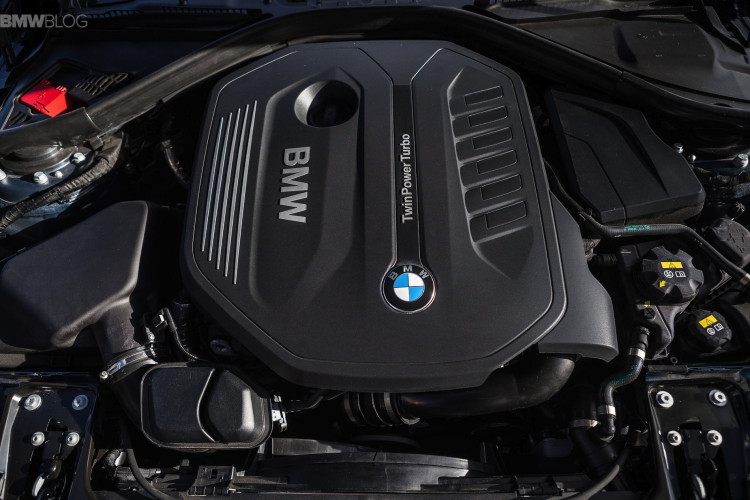
The current BMW straight-six gasoline engine B58 receives its first technical revision. The B58 TÜ1 with 3.0 liter capacity was introduced a few days ago at the 2018 Aachen Colloquium for Engine Technology and is offered as usual with different performance levels. The main objective of the revision was to further improve emission performance to meet the requirements of the WLTP cycle and RDE measurements. In addition to the CO2 and particle emissions, the focus was on future legal limits as well.
BMW B58 engine
One of several important technical innovations is a completely new fuel system that operates at an injection pressure of up to 350 bar. So far, the injection system of the B58 worked with “only” 200 bar maximum pressure. The significantly higher injection pressure necessitates numerous further changes, ranging from the injection valve via the high-pressure lines to the delivery volume of the high-pressure pump. The 350-bar injection makes a significant contribution to reducing the cumulative number of soot particles produced during combustion by more than 50 percent when driving in accordance with the WLTP cycle.
In order to realize the 350-bar injection, the chain drive had to be fundamentally revised. From the two-part layout of the previous B58, the B58 TÜ1 is converted to a one-piece chain drive layout. This eliminates the base wheel which together with optimized slide rail design contributes to a considerable 30 percent less friction in the chain drive.
The split-cooling approach, which fundamentally changes thermal management, is also completely new. Unlike in the past, there are two separate cooling circuits for the cylinder head and crankcase. At low and medium load, the cylinder wall temperature is not unnecessarily lowered, which brings advantages in the combustion, which has a significant impact both in the WLTP cycle and in the low-load daily routine of most customers.
Another advantage of the always high cylinder wall temperatures is that the engine generates less soot particles in the event of a sudden load jump. On the other hand, the tendency to knock does not increase because the split-cooling approach simultaneously ensures a well-cooled combustion chamber roof.
The profound changes in chain drive and cooling have also necessitated a redesign of the crankcase. Here, the wall thickness was optimized and the engineers implemented some other lightweight construction measures, for a total of weight savings of just over 2 kilograms. The forged crankshaft was once again optimized, resulting in an additional weight saving of around 2 kilograms.
Of course, the BMW B58 TÜ1 outperforms its predecessor in terms of performance. Initially, two power levels are planned, called ML (middle power level) and OL (upper power level). In the ML comes the B58 TÜ1 with 250 kW (340 hp) and 450 to 500 Newton meters of torque, the OL has 275 to 285 kW (374 to 388 hp) and 500 Newton meters of torque. Of course, the new M-engine S58 will adopt some ideas of the B58 TÜ1 development in an adapted form.
In the middle performance level, a new cylinder head with integrated manifold is used. This sophisticated solution brings various advantages in terms of thermal management and, among other things, allows a more efficient distribution of heat to relevant points. The exhaust gas turbocharger of the middle power level has been adapted to the new position of the manifold, which in addition to the cost benefits also brings a weight saving of 2 kilograms. The upper power level uses a turbocharger with integrated manifold, which has also been further refined.
Overall, it can be said that the BMW B58 TÜ1 clearly outperforms its predecessor in all important engineering aspects. At the same time, the engineers are also promising lower emissions, improved acoustics, further reduced weight and increased power and torque capacity.
No surprise is that the new straight-six gasoline engine is also prepared for future electrification measures and can be easily adapted for the use of appropriate components.
[Source: Bimmertoday]The article BMW B58 TÜ1: Technical Updates Bring 388 horsepower appeared first on BMW BLOG
from BMW BLOG https://ift.tt/2yKiInA

No comments:
Post a Comment